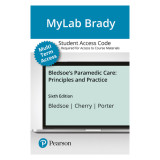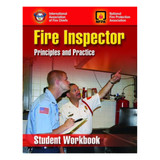Paramedic Care: Principles & Practice Kit
Offers updated coverage of the latest guidelines, standards, current trends and practices in paramedicine
- UPDATED: Chapter 1, “Introduction to Paramedicine,” includes new introductions to Mobile Integrated Health Care and Community Paramedicine, expanding topic coverage beyond emergency response and transport to community health initiatives.
- UPDATED: Chapter 2, “EMS Systems,” includes a new section on Healthcare System Integration, emphasizing, per the latest AHA guidelines, the role of EMS in all types of cardiac emergencies, especially in the identification of acute coronary syndrome and ST-segment myocardial infarction (STEMI).
- UPDATED: Chapter 3, “Roles and Responsibilities of the Paramedic,” includes a note acknowledging that aspects of the Affordable Care Act of 2010 have changed health care in numerous ways.
- UPDATED: Chapter 4, “Workforce Safety and Wellness”, includes notes on diseases introduced by international travel, a new section on Ebola virus disease (how it is carried, and how to protect against an exposure), and a new section on post-traumatic stress disorder.
- UPDATED: Chapter 5, “EMS Research,” includes the updated American Heart Association Levels of Evidence.
- Chapter 7, “Medical/Legal Aspects of Out-of-Hospital Care,” places emphasis on: the fact that EMS laws and regulations differ between states, cities, and counties; the importance of individual liability insurance; and invasion of privacy issues concerning cell phone cameras and social media. A new section is included on physician orders for life-sustaining treatment (POLST).
- UPDATED: Chapter 13, Emergency Pharmacology,” includes updated tables listing antiarrhythmic and hormone-related drugs per the latest American Heart Association guidelines.
- UPDATED: Chapter 14, “Intravenous Access and Medication Administration,” contains an updated section on Venous Access Devices, including tunneled catheters, medication ports, and peripherally inserted central catheters (PICCs). A new section is also included on Ultrasound-Guided Intravenous Access.
- UPDATED: Chapter 15, “Airway Management and Ventilation,” includes a segment on apneic oxygenation, a new strategy used to minimize the likelihood of hypoxia during endotracheal intubation.
Keeps students on track with their reading and understanding of the content
- Chapter-opening Objectives keep students focused on learning the core concepts covered in the chapter.
- Key Terms with page references showing where they first appear help students master new terminology.
- A Case Study draws students into the reading and creates a link between the text content and real-life situations and experiences.
Supports visual learning and reinforces concepts
- Tables and Illustrations throughout every chapter provide visual support to enhance understanding.
- Procedure Scans illustrate step-by-step how to perform core skills.
- Patient Care Algorithms offer graphical “pathways” that integrate assessment and care procedures.
Provides critical-thinking opportunities for students throughout the text
- You Make the Call features promote critical thinking by requiring students to apply principles to actual practice.
- Patho Pearls offer a snapshot of pathological considerations students will encounter in the field.
- Legal Notes present instances in which legal or ethical considerations should be evaluated.
- Cultural Considerations provide an awareness of beliefs that might affect patient care.
- Assessment Pearls highlight important assessment considerations and techniques.
Provides a comprehensive review of the objectives covered in every chapter
- A chapter Summary provides students with a concise review of important concepts.
- Review Questions ask students to apply the principles they’ve just learned.














